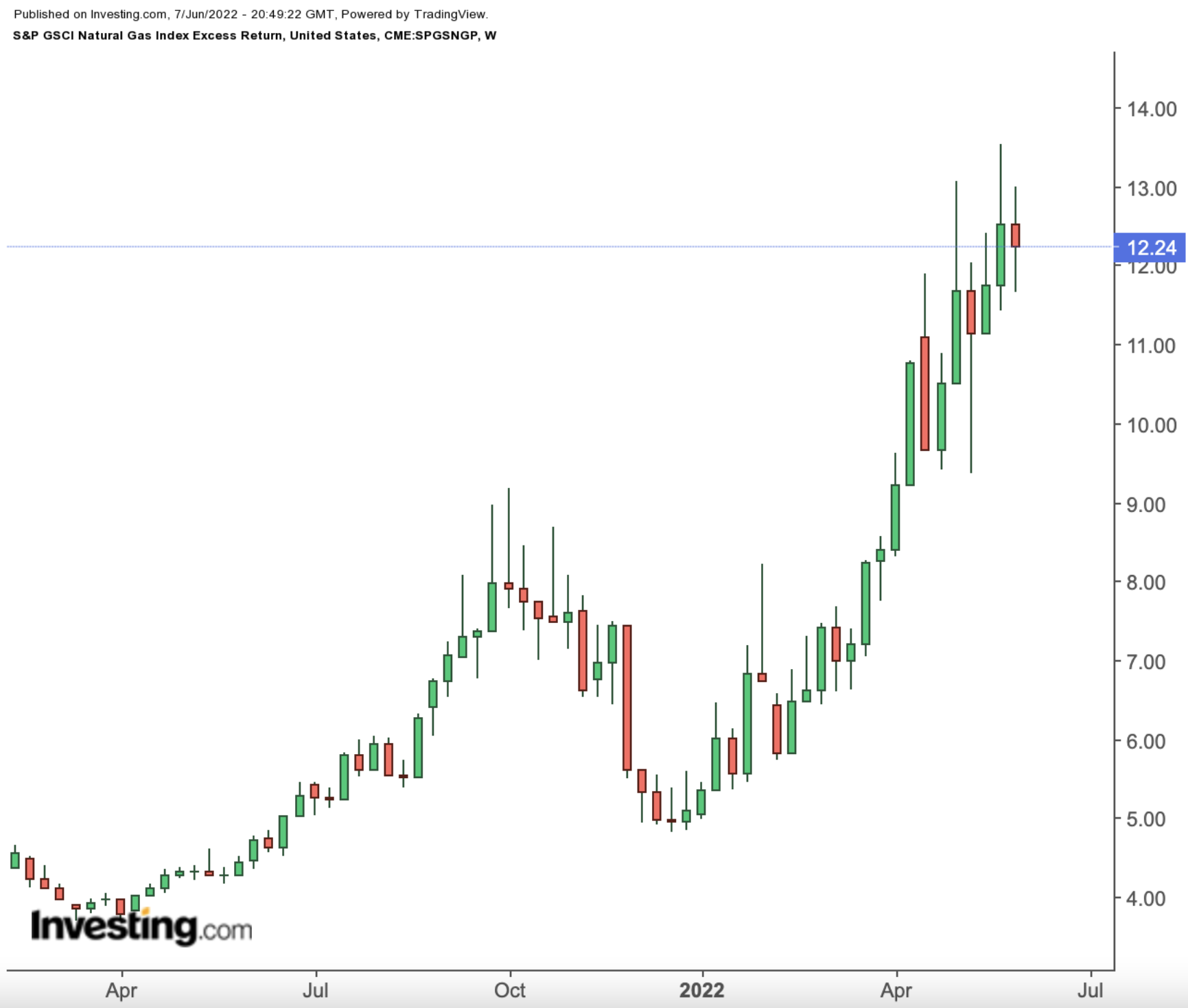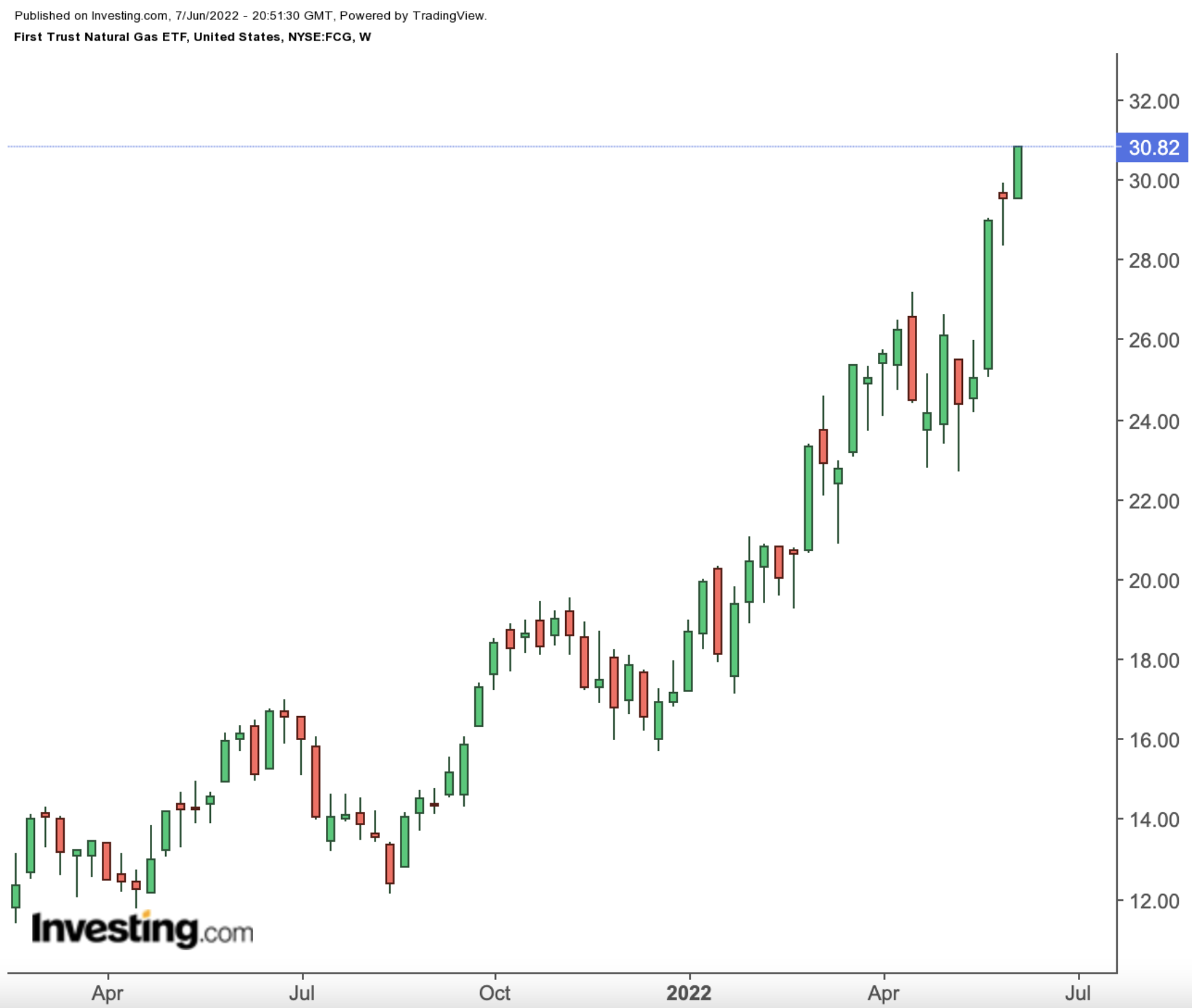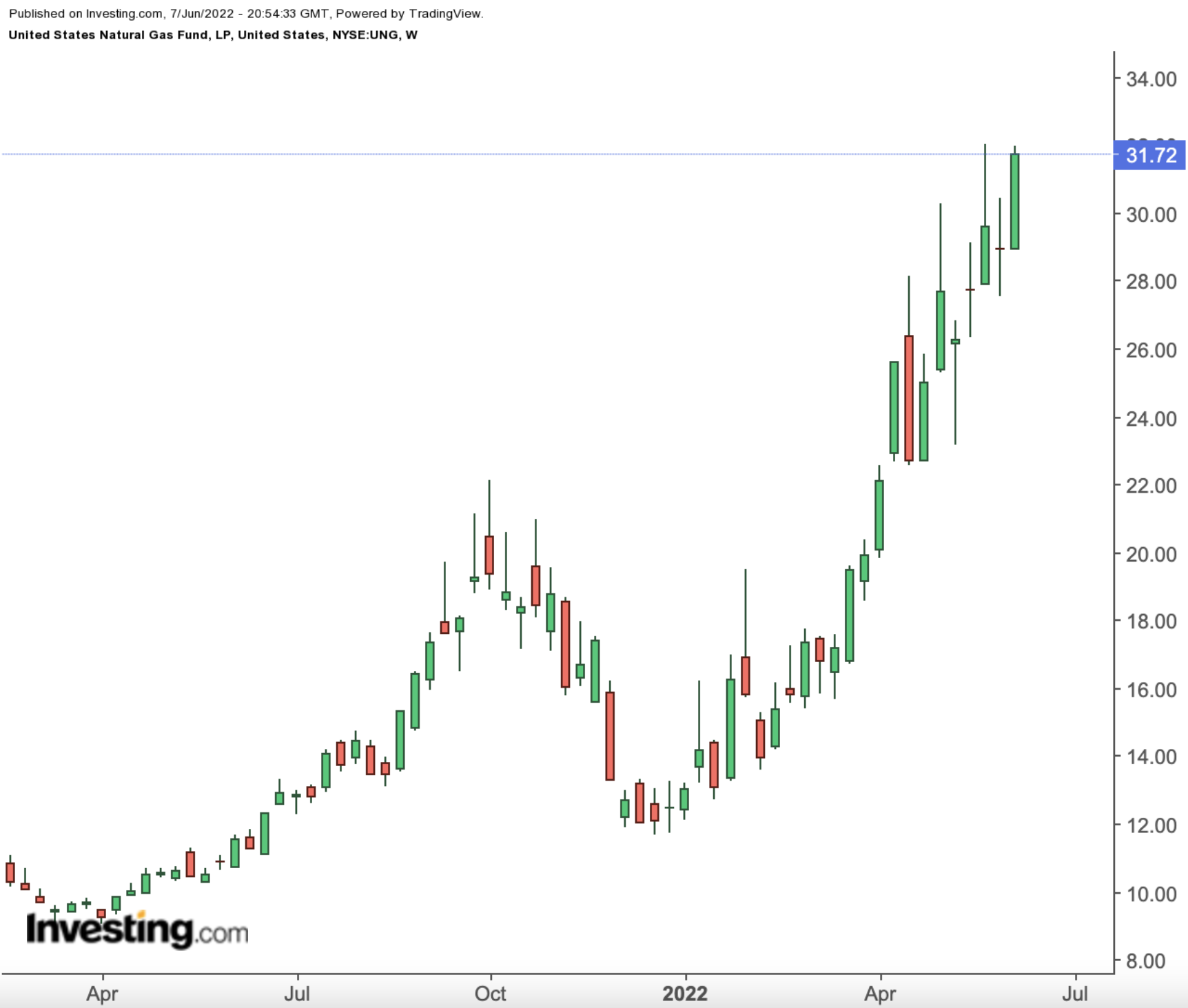The price of natural gas is currently hovering around $9.4 per million British thermal units (MMBtu), a multi-year high. As macroeconomic and geopolitical factors indicate that the global energy market should remain tight through the busy summer season, investors now question if the psychologically significant $10 mark can hold in the next few months.
The S&P GSCI Natural Gas Index is up over 150% since January and 200% over the past 12 months. As a consequence, energy companies, including those focusing on natural gas, have also enjoyed stellar returns.

Several factors influence natural gas prices. These may include supply/demand imbalances, weather conditions, economic growth, or government policies.
The US Energy Information Administration (EIA) points out:
"In 2021, the electric power sector accounted for about 37% of total US natural gas consumption, and natural gas was the source of about 32% of the US electric power sector's primary energy consumption."
Thus, rising air-conditioning demand in a hotter-than-normal summer—anticipated in the US this year—could spike prices even higher. In terms of global natural gas consumption, the US leads. Next, come Russia, China, Iran, and Canada.
Finally, on the supply side of the equation, we see the US, Russia, Iran, China, Qatar, and Canada as the leading producers. Understandably, the Russian invasion of Ukraine has been an important factor in the rapid increase of energy prices so far in 2022.
Here are two exchange-traded funds (ETFs) that could appeal to readers looking to generate returns from natural gas prices in the scorching summer months ahead.
1. First Trust Natural Gas ETF
- Current Price: $30.82
- 52-week range: $12.10 - $30.86
- Dividend yield: 1.28%
- Expense ratio: 0.60% per year
Our first fund for today is the First Trust Natural Gas ETF (NYSE:FCG). It invests in US energy names that derive a significant portion of revenue from the exploration or production of natural gas. Fund managers have other market capitalization (cap) and liquidity requirements. This ETF started trading in May 2007.

FCG has 44 holdings, with the top 10 stocks comprising almost 40% of $1 billion in net assets. They include EQT Corp (NYSE:EQT), Occidental Petroleum (NYSE:OXY), Antero Resources (NYSE:AR); DCP Midstream LP (NYSE:DCP), Coterra Energy (NYSE:CTRA), and ConocoPhillips (NYSE:COP).
FCG has returned around 79.3% year-to-date and 87.1% over the past 12 months. As we write on June 7, the fund is hovering at a multi-year high.
Meanwhile, trailing price-to-earnings (P/E) and price-to-book (P/B) ratios stand at 12.68x and 2.65x. Those who want to participate in further moves could consider a fund like FCG that invests in natural gas names.
2. United States Natural Gas Fund
- Current Price: $31.72
- 52-week range: $10.98 - $32.03
- Expense ratio: 1.11% per year
Next, we have a fund that could appeal to readers who look to invest in natural gas as a commodity rather than buying energy stocks. The United States Natural Gas Fund (NYSE:UNG) is structured as a commodity pool that offers a relatively straightforward exposure to the price of natural gas delivered at the Henry Hub, Louisiana. It tracks the daily movements of the front-month benchmark futures contract as traded on the New York Mercantile Exchange (NYMEX). The fund can also choose to invest in forwards and swap contracts.
UNG is the largest futures-based natural gas ETF stateside, with $601 million in net assets. Currently, the fund holds Natural Gas July 2022 contracts and cash collateral. It commenced operations in April 2007.

In June last year, UNG was trading in the $10 territory. But the recent turbocharged natural gas rally boosted the fund to its record-high level. It is up to more than 153% since January and 191% over the past 12 months.
Many analysts argue that the commodity price is now overbought. However, asset prices, in general, can stay overbought for a long time, especially if the fundamentals support high prices before technical trend lines come crashing down. Put another way; the natural gas market is likely to stay volatile in the coming weeks.
Those readers who expect the market to continue to bid up natural gas prices should UNG on their radar screen. Yet, we should remind readers that UNG is highly exposed to the adverse impacts of contango or negative roll yield. Thus, the fund may be more appropriate for experienced traders with a short-term strategy.
